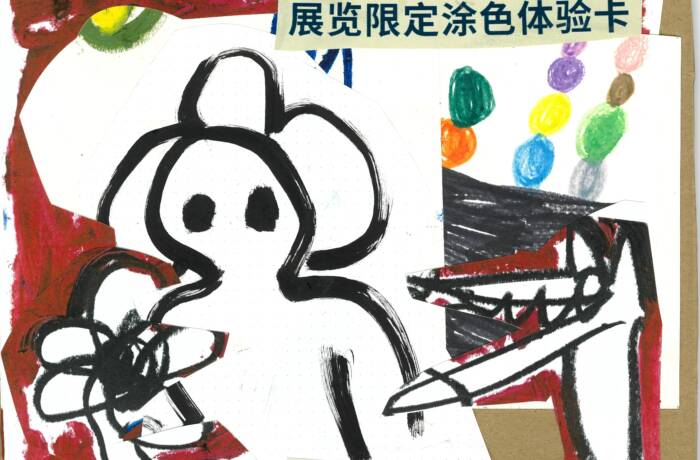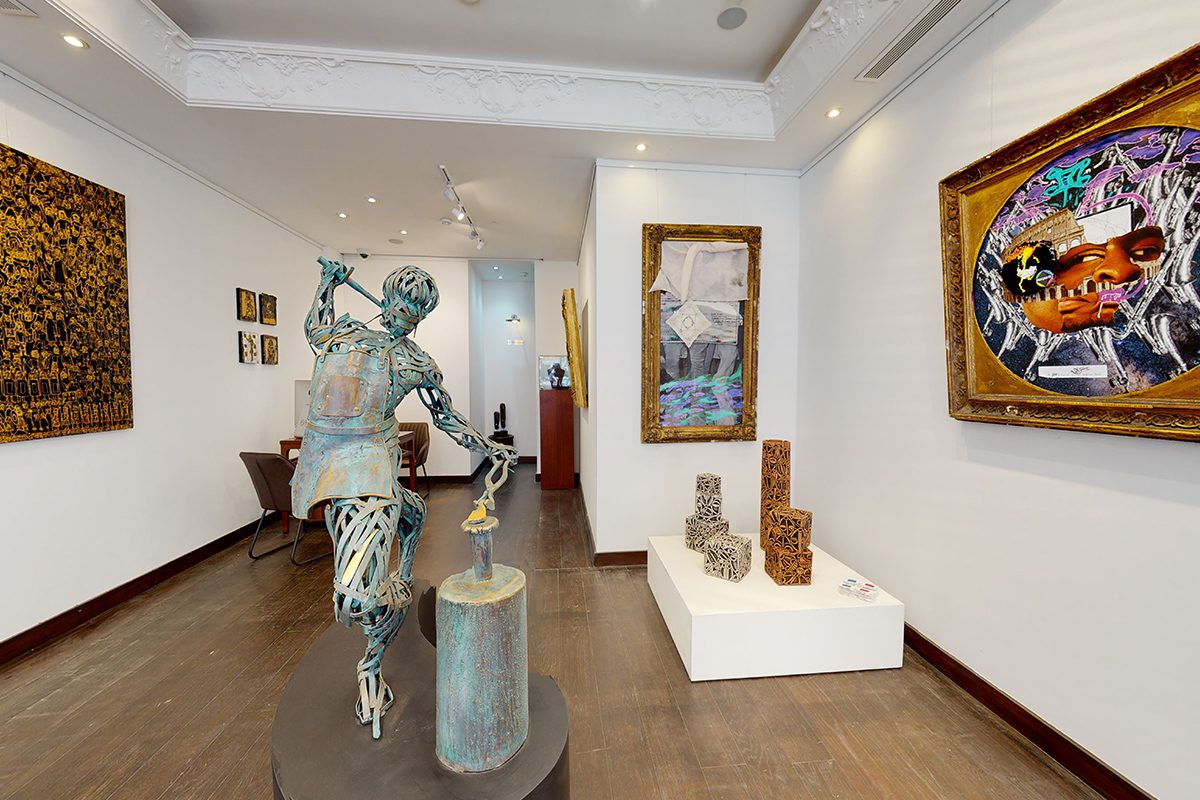
Installation view of A History Untold curated by Lisa Anderson at Signature African Art London. Photo © Mora Ltd
Lisa Anderson is an independent curator and the founder of the Instagram account @blackbritishart, which she uses as a platform to promote the work of Black British artists, past and present. Following the opening of her latest curatorial project, A History Untold at Signature African Art London, LUX speaks to her about art as an educational tool, the role of social media and the exhibitions she’s looking forward to seeing
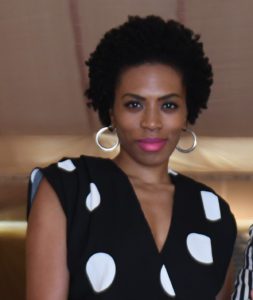
Lisa Anderson
1. What led you to set up the Black British Art Instagram account?
Back in 2015 when I created @blackbritishart, the visibility of Black British artists on Instagram was nothing like it is today. There simply were not as many artists online and there was no access to a fluid, intergenerational conversation about Black British art practice on the platform that brought together the works of established pioneers, alongside the exciting waves of emerging talent.
Follow LUX on Instagram: luxthemagazine
As an art nerd, who enjoyed following accounts that featured artists across the African Diaspora globally (Europe, the United States of America, the Caribbean etc) and from across the African continent, I desperately wanted to see an account that championed the variety of black artistic practice in the UK, reflecting the tapestry of works they create across the mediums of painting, drawing, digital art, sculpture, assemblage, collage, textile art, ceramics, and film. I knew the artists were out there, but there was a big digital hole on Instagram, so I decided to fill it.
When I started the platform, no one had yet claimed the hashtag #blackbritishart. There are now tens of thousands of works tagged, which I’m proud to have contributed towards. So, the genesis was curatorial curiosity and passion for celebrating the depth and breadth of fine art produced by Black artists in the United Kingdom – past, present, existing, and persisting.
2. Do you think social media is making art more accessible?
Undoubtedly. Through hashtags and the networked nature of these platforms, you can scroll your way through to an education in your favoured corner, or corners of the art world. I built Black British Art up by finding artists this way and exploring the artists, gallerists, curators, writers they were connected to. As Instagram, in particular, has evolved, the content has expanded beyond just the image or film content. It has become even more informational. Some Instagram pages are designed specifically to promote and educate followers about arts events or provide accessible show reviews through accounts such as @thewhitepube, which is one of my favourites. I have discovered and connected personally with artists online whose works I’ve bought, sold, and featured in exhibitions, such as Enam Gbewonyo and Irvin Pascal. Earlier this year there was also a huge boom in global arts networking through ClubHouse, which allowed arts enthusiasts to access, previously quite exclusive conversations about the art market that have empowered some emerging collectors to make more confident forays into their collecting journeys. And I don’t think the gold rush for NFT Art would have been possible without social media.
3. Tell us about your curation process for A History Untold at Signature African Art. How did you go about selecting the participating artists/works?
The brief for the exhibition stems from the failure of the British educational system to address British history in a truly inclusive and authentic way. In a way that honours all its citizens, thereby fostering respect the variety of cultures and ethnicities represented in modern Britain. In this case our focus is on the absence of a more holistic, complicated approach to Africa in the educational system. Our exhibition tackles this by choosing artists across the African continent and from the African Diaspora in the UK, whose works speak to under-examined areas of history such as Africa’s contribution to the study of mathematics, metallurgy, the development of paper for writing, the political power of jazz music as well as the contribution of African colonial subjects to the building of modern Europe through their efforts in the Second World War. We wanted to choose artists from various countries, whose practice resonated with these themes and art mediums.
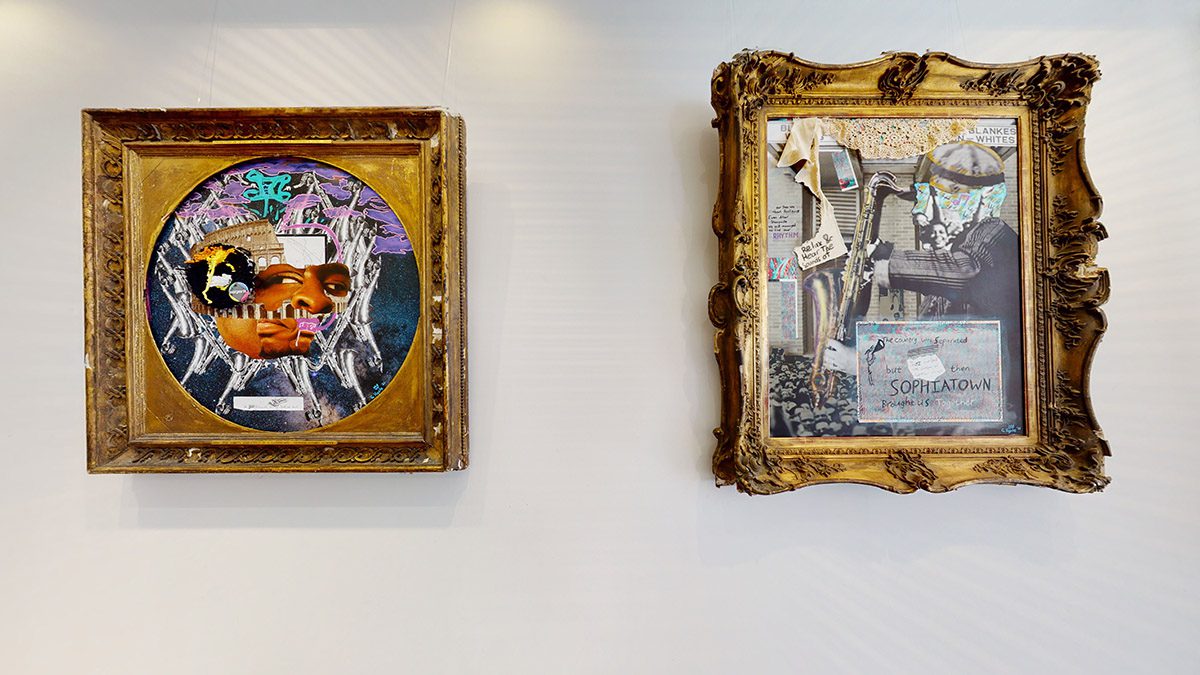
4. The exhibition aims to reveal the lesser-known stories of Black history. In developing the show, did you personally learn anything new?
Prior to the show I didn’t know about the Ishango bone and the relevance this has as a marker of mathematic knowledge in the world. It’s such a beguiling and profound artefact. Perhaps the oldest mathematical artefact in existence, unearthed in 1950 in the then Belgian colony of the Congo (now the Democratic Republic of Congo) and dated to the Upper Paleolithic Period of human history, approximately 20,000-25,000 years ago. This is why I think art should be used more in education. Once you learn about the Ishango bone, it explodes so many myths about where ancient knowledge comes from. It was also interesting to learn more about the variety of African civilisations that developed mastery of metallurgy.
Read more: Director of The Stand Beth Greenacre on the rise of buying art online
In terms of more contemporary history, however, one of the most moving discoveries was the personal histories of the black British artists in the show, Adelaide Damoah and Peter Adjaye, who are collaborating on a sculptural and sound piece. Their work explores the personal legacy of colonialism, as both have Ghanaian ancestors who fought for the second world war. I vaguely knew about the contributions made to the World War efforts by colonial subjects, however, learning the personal stories of these artists has redoubled my commitment to learn and share more about this history.
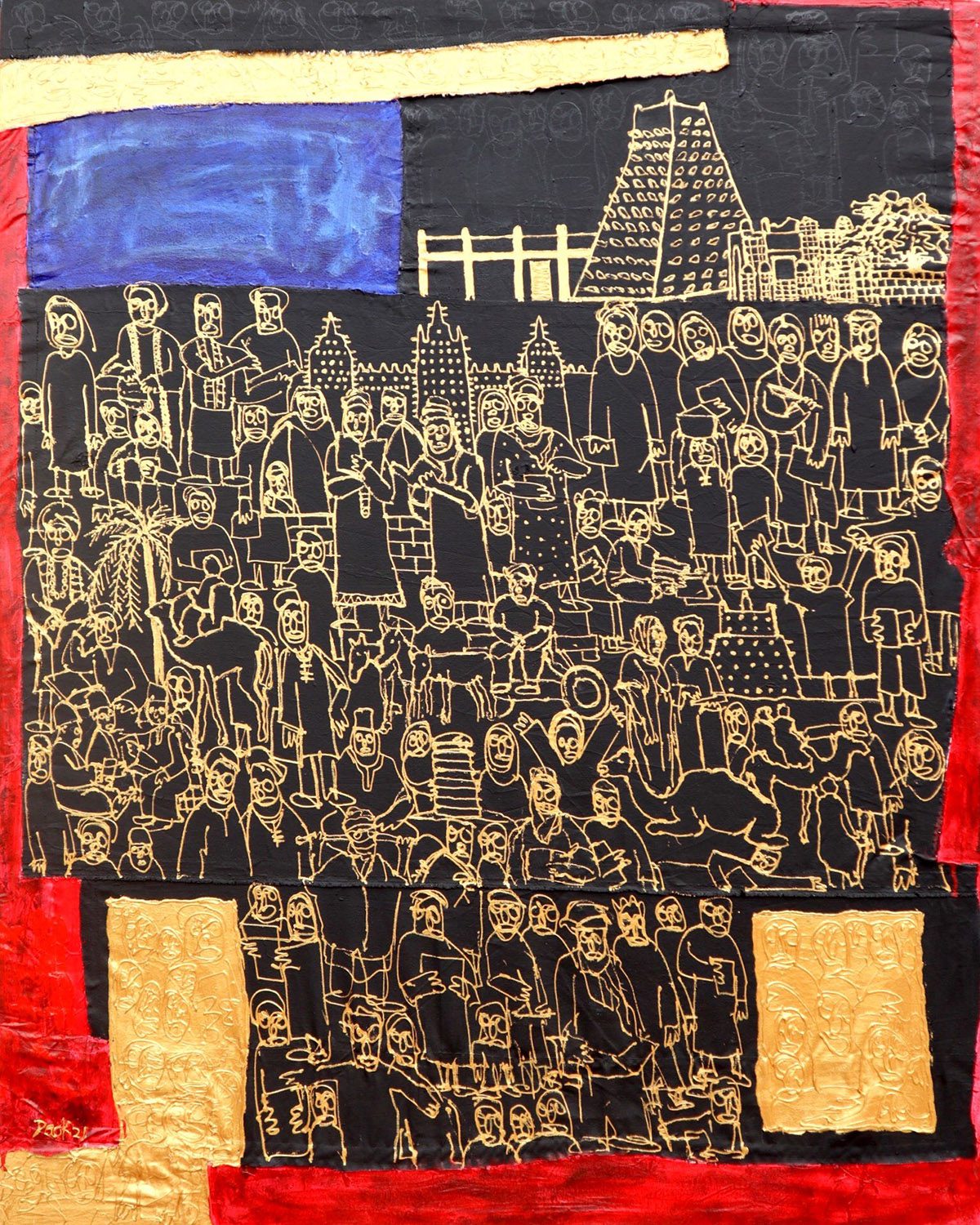
Damilola Okhoya, Once Upon a Time Under the Blue Skies I, 2021
5. How effective is art as an educational tool?
I believe art is one of the most powerful educational tools, because of its capacity to represent both real life and conceptual ideas in profound and transformational ways. Whether it’s a painting depicting the horrors and madness of war, a sculpture depicting the beauty of the human form, a picture of flowers conveying lost love, or a film work depicting the terror of racial violence, artwork can leave an emotional, intellectual and spiritual imprint that leaves you changed forever. I developed a whole new appreciation of my vulnerability to responsibility for nature’s cycles and the power of the sun after I experienced Olafur Eliasson’s Weather Project at the Tate Modern’s Turbine Hall in 2003. Truly one of my most treasured art experiences. For this reason and many more examples, I could provide, I believe that art was woefully under-utilised as a resource for basic education in my time. But I think the digital realm makes this much more plausible for future generations.
6. Now that museums and galleries have reopened, what are you most looking forward to seeing?
I’m so glad you asked that; I’ve been starved of seeing art in the flesh. There are countless shows I’m looking forward to. Through my Black British Art platform, I promote a list of shows to see that include works from black British artists. This month, I’m especially looking forward to a couple of group shows in London: Self Portrait, featuring a group of black female photographers, on show at Ronan McKenzie’s art space called Home and Citizens of Memory at The Perimeter curated by Aindrea Emelife. I’ve still not seen Lynette Yiadom Boakye’s show at the Tate Modern and really want to see the James Barnor show at the Serpentine. Further afield, I would highly recommend Phoebe Boswell’s show at the New Art Exchange in Nottingham.
“A History Untold”, presented by Maro Itoje and curated by Lisa Anderson features works by Giggs Kgole, Djakou Kassi Nathalie, Steve Ekpenisi, Damilola Okhoya, Adelaide Damoah and Peter Adjaye. The exhibition runs until 19 June at Signature African Art, Mayfair, London. For more information, visit: signatureafricanart.com


